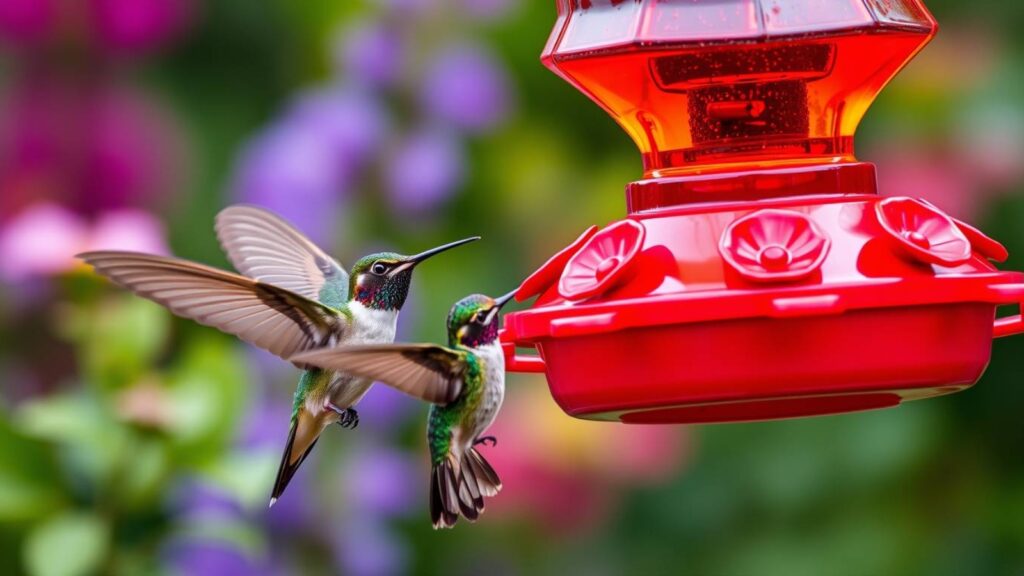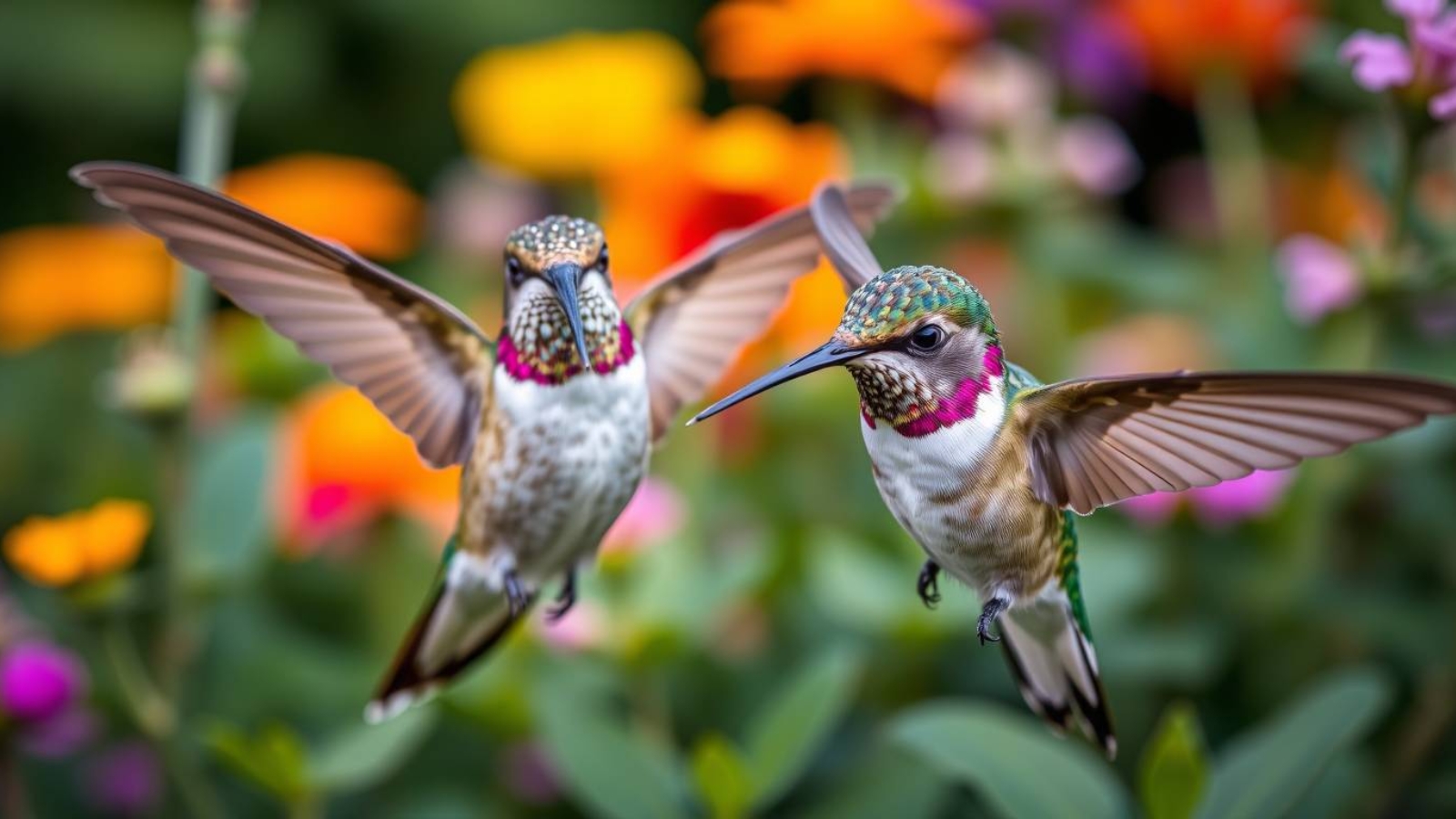Quick Answer: Hummingbirds don’t mate for life. Unlike some other bird species that form long-term pairs, hummingbirds are solitary creatures that only come together briefly during mating season.
After mating, the female handles all parenting duties alone, while the male moves on to find other mates.
Key Takeaways: (Do Hummingbirds Mate for Life?)
- Hummingbirds do not mate for life – they are solitary birds that only come together briefly to breed
- Male hummingbirds play no role in nesting or raising chicks
- Female hummingbirds are entirely independent, building nests and raising young on their own.
Unlike love birds or swans that stay together year after year, hummingbirds take quite a different approach to relationships. These tiny, remarkable birds live mostly solitary lives, coming together only for a brief courtship and mating period each year.
In this article, we’ll explore:
- How hummingbird courtship works
- Why these birds don’t form lasting pairs
- The remarkable single-parent approach of female hummingbirds
- Common questions about hummingbird mating habits.
Related post: Do Hummingbirds Leave Their Nest at Night?

The Hummingbird Dating Scene
Male hummingbirds put on quite a show when trying to attract females. Their courtship displays are like tiny aerial ballets, with males zooming up high into the air and then diving down at incredible speeds. They’ll swing back and forth in wide arcs, showing off their bright throat feathers that sparkle in the sunlight.
When a female shows interest, the actual mating is quick – lasting only 3-5 seconds. After this brief encounter, the pair goes their separate ways. The male plays no part in what happens next, moving on to find other potential mates instead.
Hummingbird Breeding Season
Breeding season timing varies by region and species. In North America, most hummingbirds breed between March and July. The timing perfectly matches when flowers are in full bloom, ensuring plenty of nectar for mothers and their growing chicks.
Weather plays a crucial role in breeding success. Female hummingbirds often time their nesting to avoid the heaviest rains, which could damage their tiny nests. In tropical regions, some hummingbird species may breed year-round when conditions are right.
The Nesting Process
Female hummingbirds are master builders. Their nests are engineering marvels, built using:
- Spider silk for binding
- Soft plant fibres for cushioning
- Lichen on the outside for camouflage
- Small leaves and flower parts
The nest starts the size of a quarter but stretches as the chicks grow. Inside this cozy home, the female lays two eggs, each no bigger than a pea. She’ll spend the next 14-16 days keeping them warm, leaving only for quick food breaks.
Finding the Right Territory
Location matters greatly for nesting success. Female hummingbirds carefully choose territories that offer:
- Plenty of nectar-rich flowers
- Protection from wind and rain
- Safe branches for nest building
- Access to water sources
- Enough insects for protein.
They’ll strongly defend these territories from other hummingbirds, ensuring their chicks have the best chance of survival.
Female Independence: Single Parenting in the Bird World
Female hummingbirds are impressive single parents. After mating, they:
- Build tiny nests using spider webs, plant down, and lichen
- Lay 1-2 eggs the size of small peas
- Incubate the eggs alone for about 2 weeks
- Feed and care for the chicks by themselves for 18-22 days.
Why Don’t Hummingbirds Form Lasting Pairs?
This breeding strategy actually makes good sense for hummingbirds. Here’s why:
- Females can raise chicks successfully on their own
- Males can help create more offspring by mating with multiple females
- Their small size and high energy needs make it more efficient to feed and live alone
- There’s no benefit to sharing territory or parental duties.
Different Species, Different Approaches
While no hummingbird species mates for life, their exact breeding behaviours vary:
- Ruby-throated hummingbirds typically raise two broods per season
- Some tropical species breed year-round
- Larger species might take longer to raise their young
- Territory size and defence strategies vary by species.
Final Thoughts
The solitary lifestyle of hummingbirds shows us that there isn’t just one right way to raise a family in nature. These tiny birds have evolved a successful breeding strategy that works perfectly for their species, even though it’s very different from what we see in many other birds.
Have you ever wondered what other surprising breeding behaviours exist in the bird world?
Frequently Asked Questions (Do Hummingbirds Mate for Life?)
Q: How many times can a hummingbird mate in one season?
A: Female hummingbirds typically raise 1-2 broods per breeding season. Males can mate with multiple females throughout the season, having no parental responsibilities.
Q: How long do baby hummingbirds stay with their mother?
A: Baby hummingbirds stay with their mother for about 18-22 days after hatching. Once they can fly and feed themselves, they leave the nest and begin their independent lives.
Q: Do hummingbirds return to the same mate next year?
A: No, hummingbirds don’t return to previous mates. Each breeding season, they find new partners through courtship displays.
Q: How do female hummingbirds choose their mates?
A: Females select mates based on the quality of their courtship displays, which showcase the male’s strength and flying abilities. They also look for bright, healthy plumage.
Q: Can hummingbirds breed with different species of hummingbirds?
A: While it’s rare, some closely related hummingbird species can hybridize. However, most hummingbirds only mate with others of their own species.
